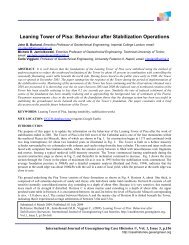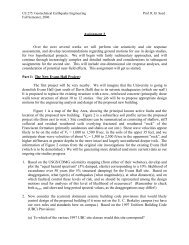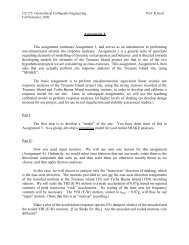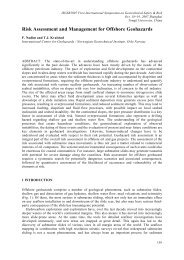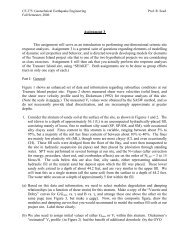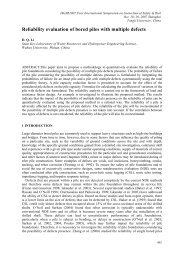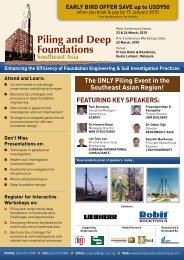Design Process of Deep Soil Mixed Walls for Excavation Support
Design Process of Deep Soil Mixed Walls for Excavation Support
Design Process of Deep Soil Mixed Walls for Excavation Support
You also want an ePaper? Increase the reach of your titles
YUMPU automatically turns print PDFs into web optimized ePapers that Google loves.
<strong>of</strong> horizontal supports (h). The system stiffness (S) is determined from the wall stiffness and the spacing <strong>of</strong> the horizontal<br />
supports (Fig. 5) as<br />
S =<br />
EI<br />
γ w<br />
h 4<br />
(1)<br />
where E is the modulus <strong>of</strong> elasticity <strong>of</strong> the wall material, I is the moment <strong>of</strong> inertia <strong>of</strong> a unit length <strong>of</strong> the wall, γ w is the unit<br />
weight <strong>of</strong> water, and h is the average spacing between supports. Calculations <strong>of</strong> the factor <strong>of</strong> safety against basal heave are<br />
used to determine an estimate <strong>for</strong> the maximum lateral deflection <strong>of</strong> the wall. Approximate pr<strong>of</strong>iles <strong>of</strong> lateral de<strong>for</strong>mations<br />
and settlement behind the wall can be determined following guidelines presented by Clough et al. (1989).<br />
Figure 2. DSM Wall <strong>Design</strong> Flowchart (After Ruther<strong>for</strong>d, 2004).<br />
International Journal <strong>of</strong> Geoengineering Case Histories ©, Vol. 1, Issue 2, p. 59<br />
http://casehistories.geoengineer.org



